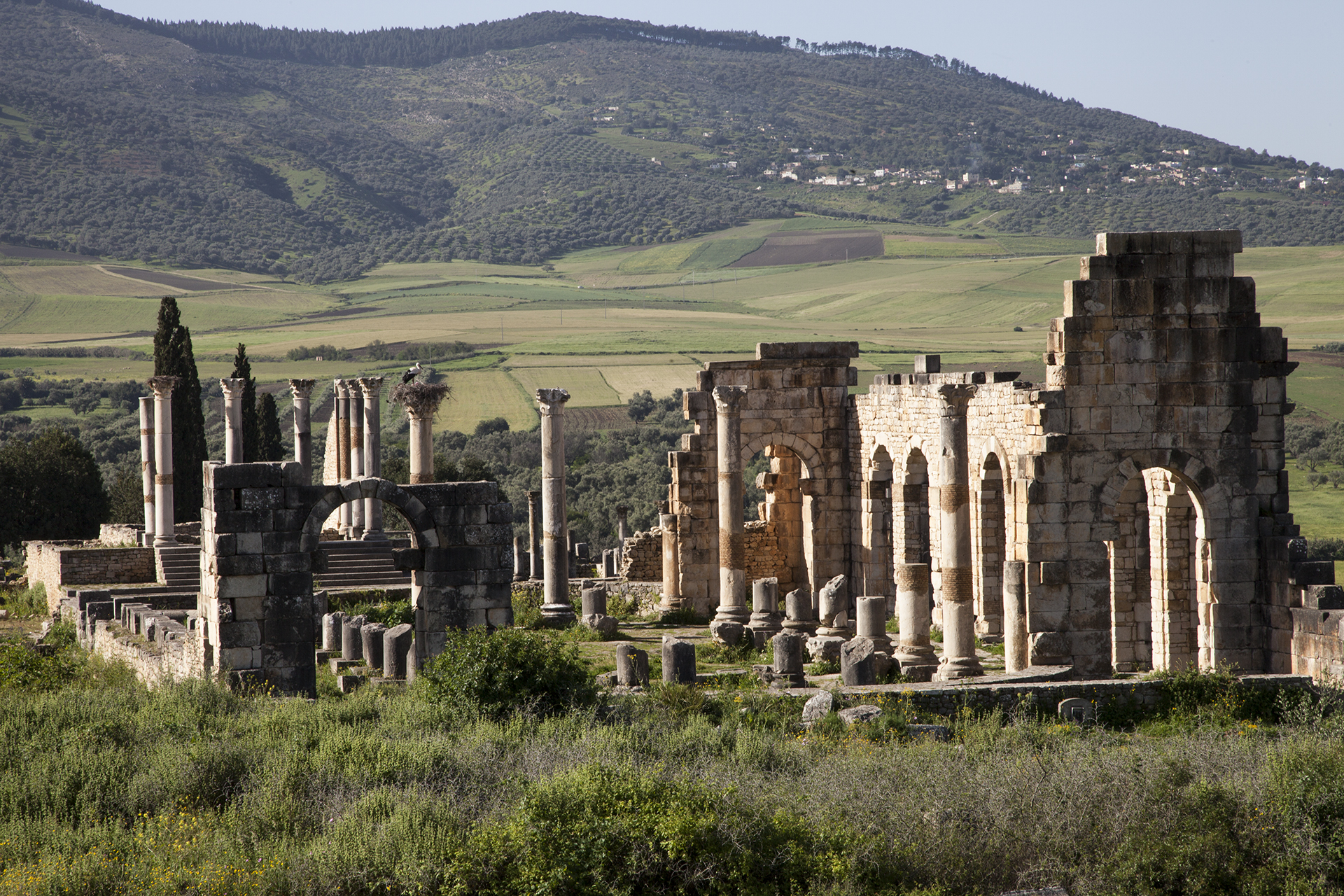Volubilis, a UNESCO World Heritage Site located in the countryside of Morocco, stands as one of the best-preserved examples of Roman ruins in North Africa. Situated near the city of Meknes, it serves as a fascinating window into the ancient Roman world, offering a glimpse into the life and architecture of a provincial Roman city from the 3rd century BC to the 3rd century AD. Volubilis played a key role in the Roman Empire, serving as an administrative center for the province and a hub for trade.
The cultural importance of Volubilis extends beyond its Roman roots. It has been a site of human habitation since prehistoric times and was later a settlement for Mauretanian kings before becoming an important Roman town. After the Romans, it was inhabited by early Christians and later by Muslims, reflecting a rich tapestry of cultures and influences.
Notable landmarks in Volubilis include the Capitoline Temple, dedicated to the Roman deities Jupiter, Juno, and Minerva, as well as the triumphal arch of Caracalla, a testament to Roman imperial power. The site is also renowned for its exquisite mosaic floors, which depict a range of scenes from Roman mythology and daily life, such as the famous 'Diana Bathing'.
Geographically, Volubilis is perched on a fertile plain at the foot of the Zerhoun Mountains, enjoying a moderate Mediterranean climate with wet winters and dry, hot summers. This advantageous location enabled the Romans to cultivate olives, grains, and wine, supporting the prosperity of the city.
In terms of cultural events, Volubilis doesn't host regular festivals, but it is often included in historical and archaeological tours in Morocco, attracting scholars and tourists interested in ancient history. The site provides an opportunity for visitors to explore the once-thriving community through its ruins and the artifacts on display.
An interesting fact about Volubilis is that after being abandoned for centuries, it was rediscovered only in the 19th century when French archaeologists began excavation work. Its well-preserved state is partly due to its location away from major urban centers, which helped protect it from excessive destruction and looting.
 Subhros
, CC BY-SA 3.0, via Wikimedia Commons
Subhros
, CC BY-SA 3.0, via Wikimedia CommonsMoroccoAfrica
Nearby Places
Fes(42 km)
Medieval medina with traditional crafts and tanneries.Chefchaouen(124 km)
Blue-painted mountain town with Moroccan charm.Ronda(298 km)
Dramatic city perched above deep gorge with historic bullring.Log in to write a review.
Sustainable Travel Tips
Plan Mindfully
- Choose direct flights when possible
- Travel during off-peak seasons
- Pack light and bring reusables
- Prefer eco-friendly accommodations
At Your Destination
- Use public transport or walk
- Support local businesses
- Respect wildlife and habitats
- Choose activities with minimal impact
Daily Habits
- Reuse hotel towels
- Take shorter showers
- Turn off lights/AC when out
- Carry a reusable water bottle
